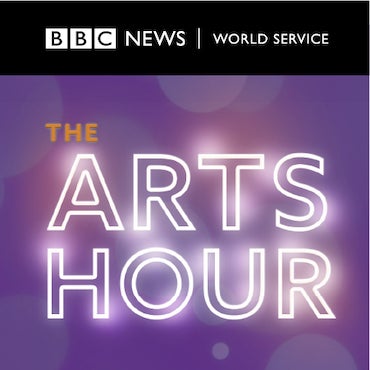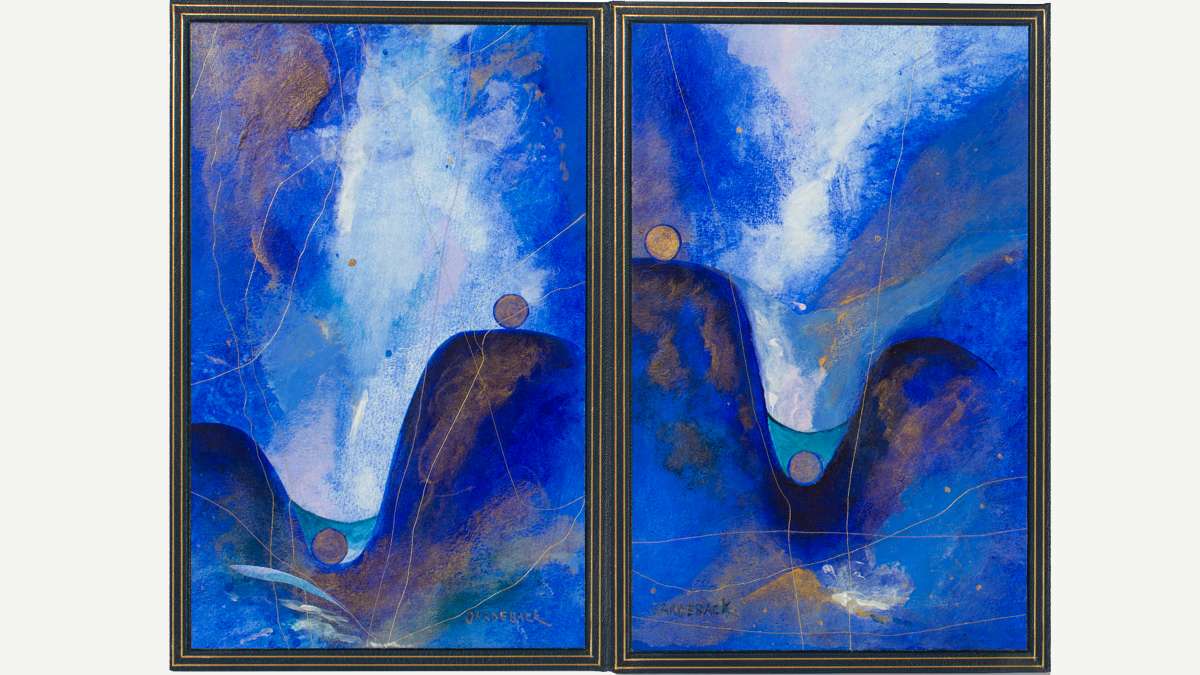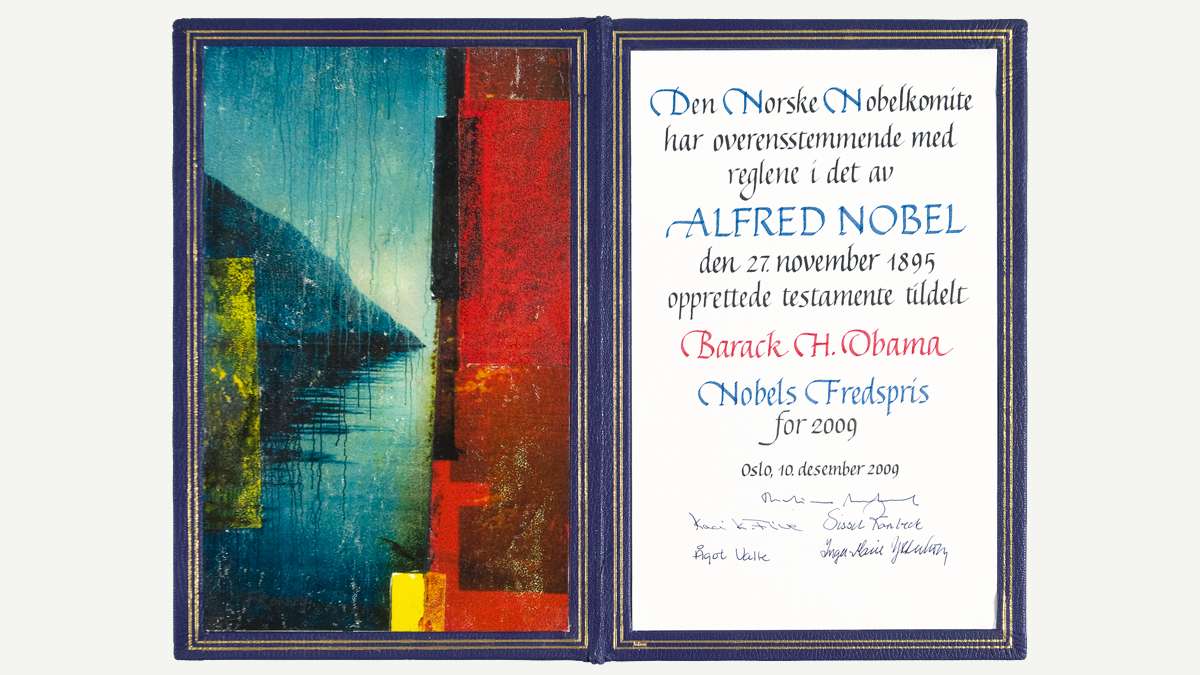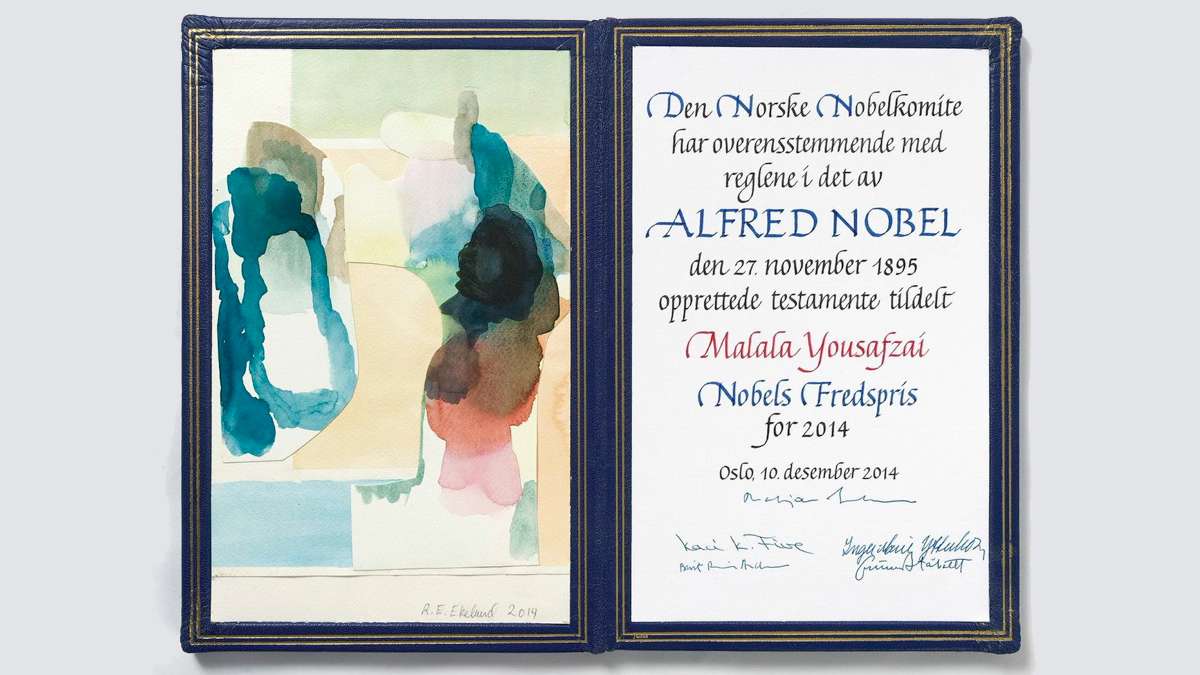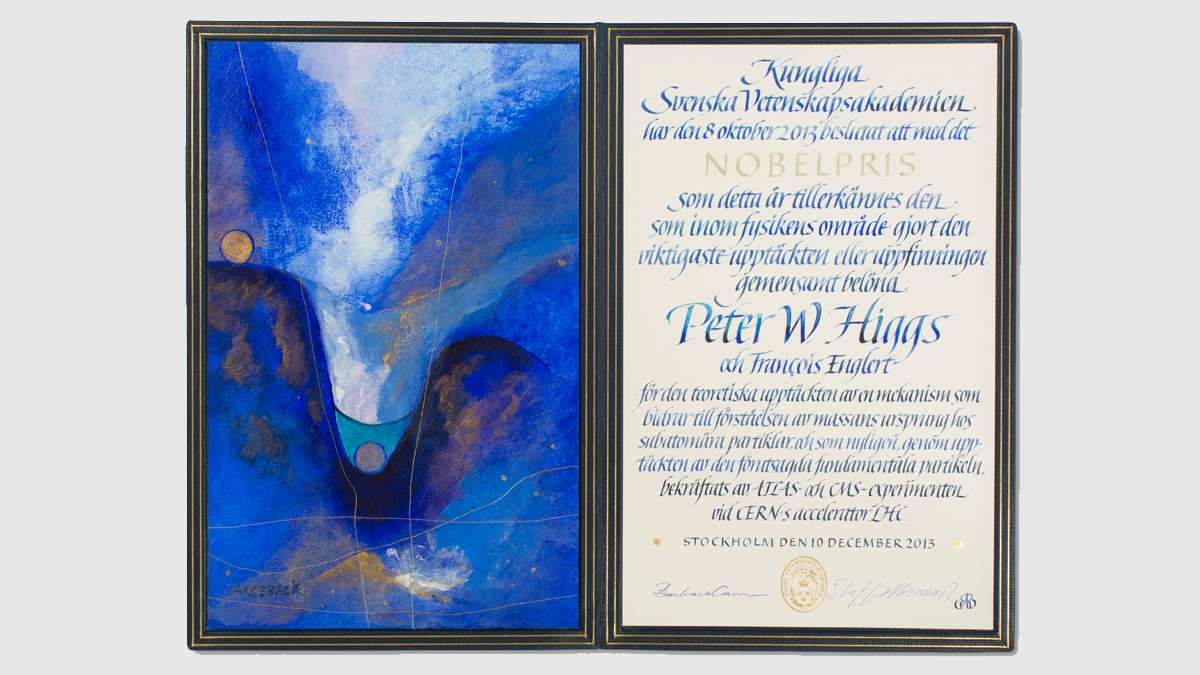After award announcements, it’s crunch time for Nobel artists
ListenThis week’s Nobel Prize announcements mark a culmination of sorts for the winners, a high-profile congratulation after decades of hard work. But for the handful of Scandinavian artists who will create original artwork for the prize diplomas, it’s just the beginning of a busy few weeks.
The Nobel laureates in five out of six disciplines will receive not only a Nobel medal and cash at their December awards ceremonies, but a piece of original art. It will be housed in a custom leather folio and tucked in opposite a hand-crafted prize certificate.
The artists commissioned to create the diploma artwork find out who the Nobel winners in their assigned categories are during the public awards announcements this week and next. By mid-November, they must produce an original piece of art, traditionally one that captures the essence of the accomplishment the prize is recognizing.
Art on deadline
This year, Swedish watercolor artist Hasse Karlsson will illustrate the economics prize, whose winner or winners will be announced Monday.
“It will be stressful, but in a positive way,” Karlsson said.
Karlsson said he must send samples of his art to the long-time Nobel calligrapher just a week after the announcement, so she can match her ink for the prize certificate to his color palette.
“If they are going to be three (winners), then it will be stressful,” Karlsson said. “So I hope they will be one or two this time.”
Karlsson painted the chemistry awards in 2013 and three physics awards last year, for the scientists who invented blue light-emitting diodes, or LEDs, which allowed for bright and energy-saving white light sources.
In contemplating how the award paintings should look, Karlsson thought about how LED lights are more efficient than traditional bulbs, easily illuminated by solar power.
“I remember that I was thinking that today’s daylight can be restored and illuminate night, and the light of the LED lamp is awakening humanity,” Karlsson said. “I was thinking about that when I did my paintings.”
Karlsson created three two-tone watercolors of figures in dark overcoats, bathed in the light spilling from storefront windows and streetlights.
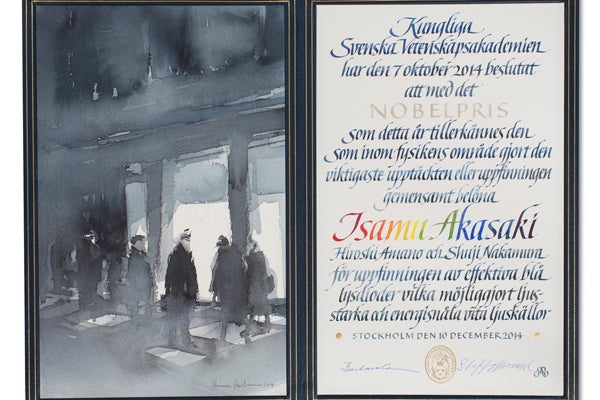
Nobel diploma for 2014 physics laureate Isamu Akasaki. Hasse Karlsson sought to portray LED light “awakening humanity” in his watercolor. (Photo by Lovisa Engblom/Courtesy of and copyright © The Nobel Foundation.)
“It was the white light I want to describe,” Karlsson said.
He painted more than three paintings, so he could choose his favorites when it came time to present his work in Stockholm.
This year, Karlsson’s paintings are due to the Royal Swedish Academy by mid-November, when they will be spirited away to a bookbinder who uses special leather to create the diploma cover. Most prize categories have an established leather color that informs the artists’ work: blue for physics, red for chemistry and medicine or physiology, and brown for economics.
The prize in medicine or physiology is the only Nobel that does not include an original painting, drawing, or other artwork. In 1965, the artwork was replaced by a gold medal in relief and calligraphic text that has remained on those prizes ever since.
A challenge in translating science into art
Karlsson’s work for the three Japanese scientists who discovered the blue LED was unusually straightforward. Light, after all, is a scientific subject well-suited to the visual arts.
Abstract artist Susanne Jardeback had a tougher task in making collages for the 2013 physics laureates Francois Englert and Peter Higgs, who won the award for the theoretical discovery of the Higgs particle.
At the award announcement in October of 2013, Jardeback asked a scientist to describe the famously elusive and complicated Higgs boson to her.
“She said it’s not easy to describe it easily,” Jardeback said. “It’s very, very hard, but you could try to do something with a Mexican hat.”
Physicists use the model of a Mexican hat when describing the particle, imagery Jardeback incorporated upside down, as a deep valley, in her collage.
“And in the background I could use some sky that was like, holy,” Jardeback recalls the scientist telling her.
The Higgs boson’s nickname of “The God Particle” inspired a color palette of midnight and aquamarine blues with highlights of celestial gold.
Jardeback created award artwork for four Nobel prize categories during her tenure as a Nobel artist, which ended last year.
Among those were the 2012 chemistry Nobel for co-laureates Dr. Robert Lefkowitz, at the Howard Hughes Medical Institute at Duke University, and Dr. Brian Kobilka, at Stanford University. They were recognized for their work on the largest family of cellular receptors for hormones in drugs.
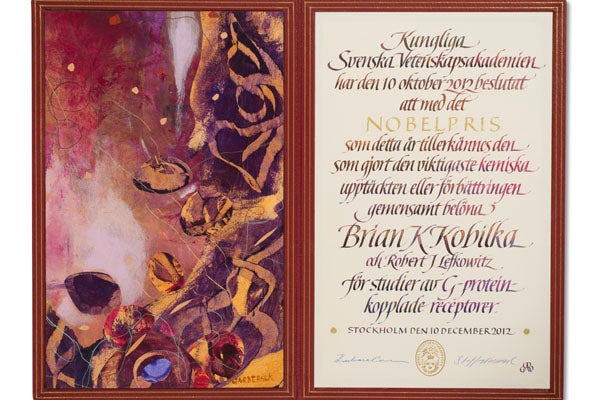
Nobel diploma for 2012 chemistry laureate Brian Kobilka. Susanne Jardeback created the collage as an abstract allusion to the inside of the human body. (Photo by Lovisa Engblom/Courtesy of and copyright © The Nobel Foundation.)
“I really like it,” Kobilka said of Jardeback’s collage. “People who have come to the house ask to see the medal, and then they spend most of the time looking at the diploma and commenting on how beautiful it is.”
Kobilka and Lefkowitz’s diplomas feature twin collages from Jardeback, created from pieces of the same torn-up acrylic paintings. They were created in dark pink and gold hues, with orbs and tangled ribbons of color.
Jardeback aimed for an abstract interpretation of the inside of the body. Lefkowitz hung the award in a prime location on his office wall, but skirts around the question of whether he actually likes it.
“Well, let’s just say it’s different,” Lefkowitz said.
“I’m not an art collector, nor do I know much about art. But let’s say I was and I was going out to buy a piece of art, I suspect that’s not the one I would have bought.”
Still, Lefkowitz does like the idea of original art being part of the prize, something he said adds to the once-in-a-lifetime Nobel experience.
“That’s something which, like everything else about the Nobel Prizes, appears to distinguish it from other awards,” Lefkowitz said.
Original artwork featured on diplomas since 1901
The award ceremony in December is steeped in tradition and formality, and there, as during the creation of the diplomas, no detail is overlooked. The Swedish royal family is present, walking onto stage in crowns and sashes just ahead of the Nobel laureates.
“The aesthetics surrounding the Nobel Prize award ceremonies have been important since the very start,” said the Nobel Foundation’s public relations manager Annika Pontikis.
“It’s how the prize award ceremonies are arranged, and the amount of time we put into making floral arrangements… the amount of work put into the diplomas is just one of all of these details.”
Details that are designed to create a sumptuous red carpet experience for people more used to lab coats than white tie.
WHYY is your source for fact-based, in-depth journalism and information. As a nonprofit organization, we rely on financial support from readers like you. Please give today.

